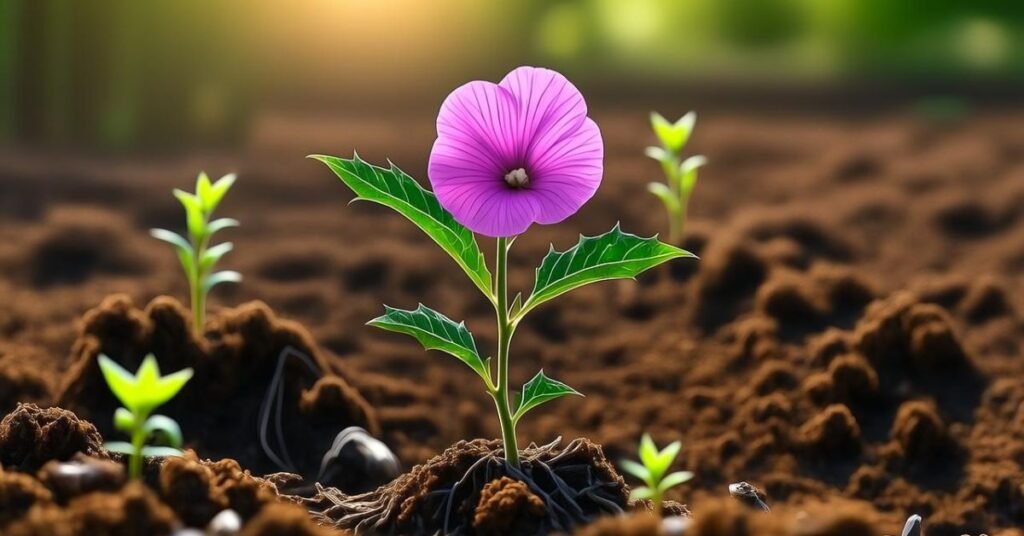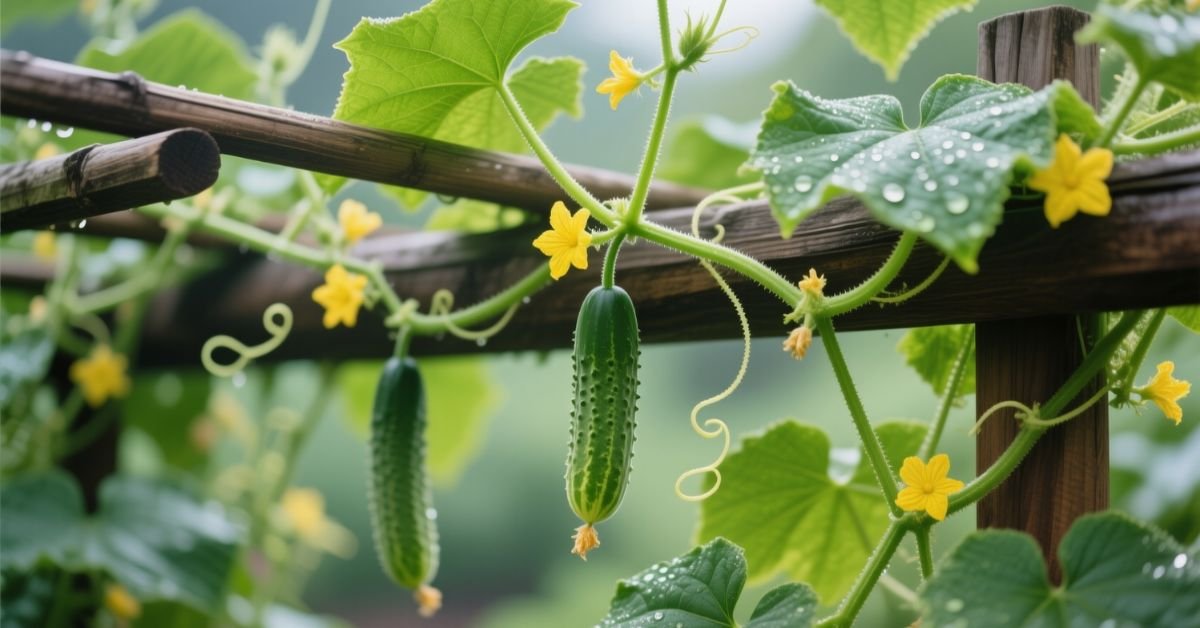Introduction
Japanese cucumber plants are a variety of cucumbers known for their long, slender shape and crisp texture.Smooth, dark green, and mildly refreshing, they have a smooth texture and a mild taste. These cucumbers grow quickly and thrive in warm, sunny conditions, making them a favorite for home gardeners.
Growing a healthy Japanese cucumber plant can be exciting and rewarding.Your garden is full of fresh, crunchy cucumbers that you can pick right from the ground. With the right care, these plants can produce a continuous harvest all season. A few simple tips can make a big difference in growth and yield.
This guide will share top tips to keep your Japanese cucumber plant healthy. You will learn about proper watering, sunlight needs, soil preparation, and pest control. Following these steps will help you enjoy a thriving plant and fresh cucumbers at home.
Growing Japanese Cucumbers
Japanese cucumbers are long, thin, and smooth. They have a mild taste and crisp texture. These cucumbers grow best in warm weather. They need plenty of sunlight and well drained soil. Water them regularly to keep the soil moist.
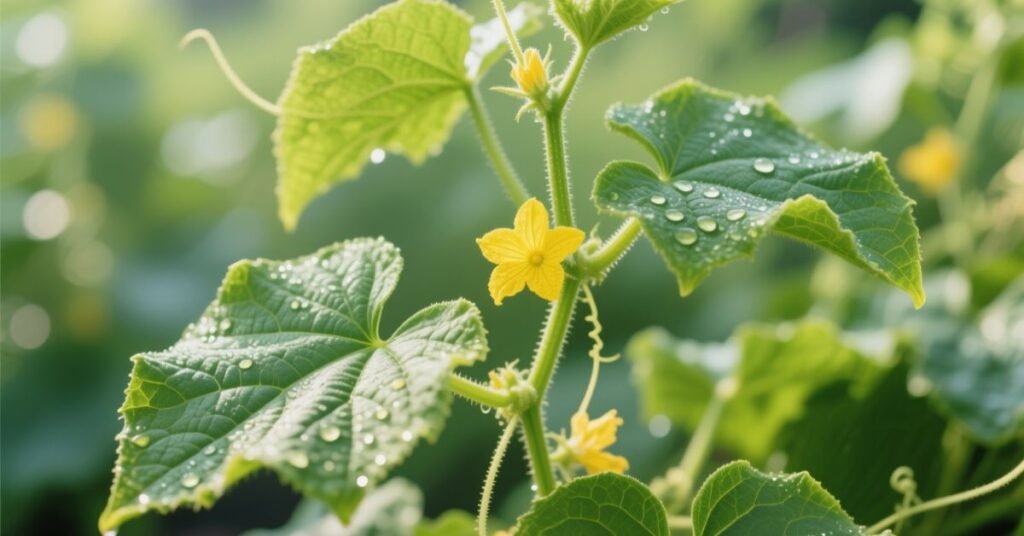
Growing Japanese cucumbers is simple with the right care.Use a trellis to support the vines and save space.When they reach an average length of eight to ten inches, harvest them. Picking them early keeps the plant productive. Fresh cucumbers taste best straight from the garden.
Soil Conditions
Good soil is key for healthy cucumber plants. The soil should be loose and rich in nutrients. It must drain well to avoid waterlogging. Warm soil helps seeds sprout faster. Adding compost improves fertility.
- Use loamy or sandy soil for best results.
- Keep soil pH between 6.0 and 6.8.
- Mix organic compost for better growth.
- Avoid heavy clay soil that holds water.
- Check soil moisture regularly to prevent dryness.
How to Fertilize Japanese Cucumber
Japanese cucumbers need proper fertilization to grow well. Start by preparing the soil with compost or organic matter. Use a balanced fertilizer when the seedlings appear. Fertilize again when the plant starts flowering. This helps produce healthy and tasty cucumbers.

Apply fertilizer around the base of the plant, not on the leaves. Water the plant after fertilizing to help nutrients soak in. Use organic fertilizers like compost tea or fish emulsion for better results. Regular feeding keeps the plants strong and productive.
Watering Tips for Japanese Cucumber
Watering is very important for healthy cucumber growth. Japanese cucumber plants need consistent moisture. Water them deeply two to three times a week. Avoid letting the soil dry out completely. Early morning watering works best for these plants.
Do not splash water on the leaves to prevent diseases. Use a watering can or drip system for gentle watering. Mulching helps retain soil moisture for longer. Check the soil regularly to keep it slightly damp. Proper watering leads to fresh and crispy cucumbers.
Indoor vs Outdoor Japanese Cucumber Plant Growing
Japanese cucumbers can grow both indoors and outdoors. Indoor growing gives more control over temperature and light. It protects plants from pests and harsh weather.
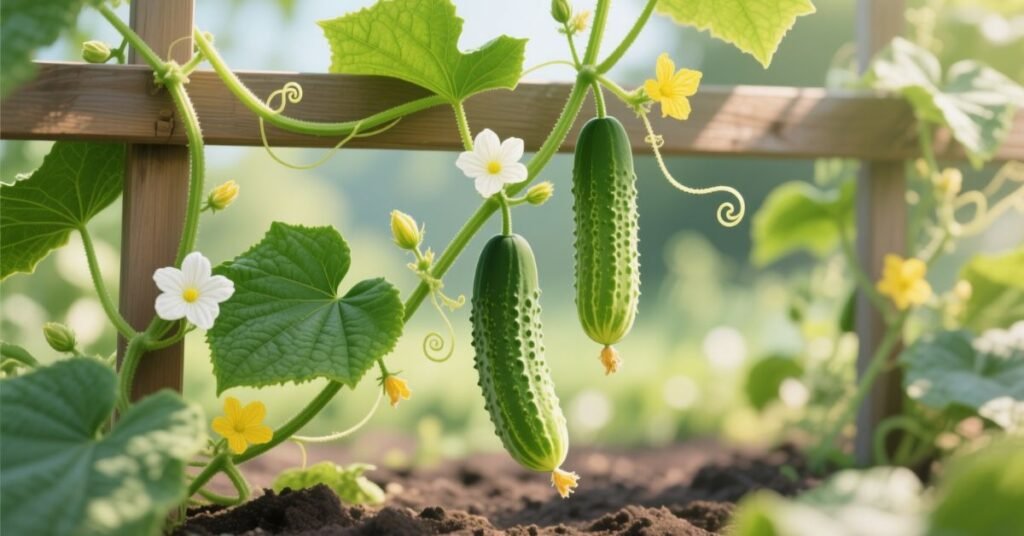
Outdoor growing allows plants to get natural sunlight and fresh air. It also gives more space for vines to spread. Both methods need proper care and watering for healthy cucumbers.
| Aspect | Indoor Growing | Outdoor Growing |
| Sunlight | Needs artificial grow lights | Gets natural sunlight |
| Temperature Control | Easy to control with room conditions | Depends on weather |
| Pest Protection | Fewer pests indoors | More exposure to pests |
| Space | Limited space for vines | Plenty of space for growth |
| Maintenance | Requires regular monitoring | Easier with natural environment |
Harvest Japanese Cucumber Plant
Harvesting Japanese cucumber plants is simple and rewarding. Pick the cucumbers when they are 8 to 10 inches long. Young cucumbers taste sweeter and crunchier. Use a clean pair of scissors or a knife to cut them. Avoid pulling the fruit to prevent damage. Harvest regularly to encourage more growth. Freshly picked cucumbers are best for salads and snacks.
Preserve Japanese Cucumber Plant
Preserving Japanese cucumber plants keeps your harvest fresh for longer. Store freshly picked cucumbers in a cool place or refrigerator. Paper towels can be used to absorb moisture from them. Pickling is a great way to enjoy them for months. You can also make cucumber slices and freeze them for later use. Proper preservation helps reduce waste and keeps the cucumbers crisp.
Pest Control Tips for Japanese Cucumber Plant
Japanese cucumber plants can attract pests if not cared for properly. Regular checks help spot problems early. Use natural methods to keep your plant healthy and safe.
- Inspect leaves and stems for pests weekly.
- Remove damaged or yellow leaves to prevent spread.
- Spray neem oil or soapy water to control insects.
- Keep the garden clean to avoid pest hiding spots.
- Encourage ladybugs and bees for natural protection.
Pruning and Training a Japanese Cucumber Plant
Pruning and training a Japanese cucumber plant helps it grow strong and healthy. Remove yellow or damaged leaves to improve air flow. The extra side shoots should be pinched off to focus energy on the fruit.
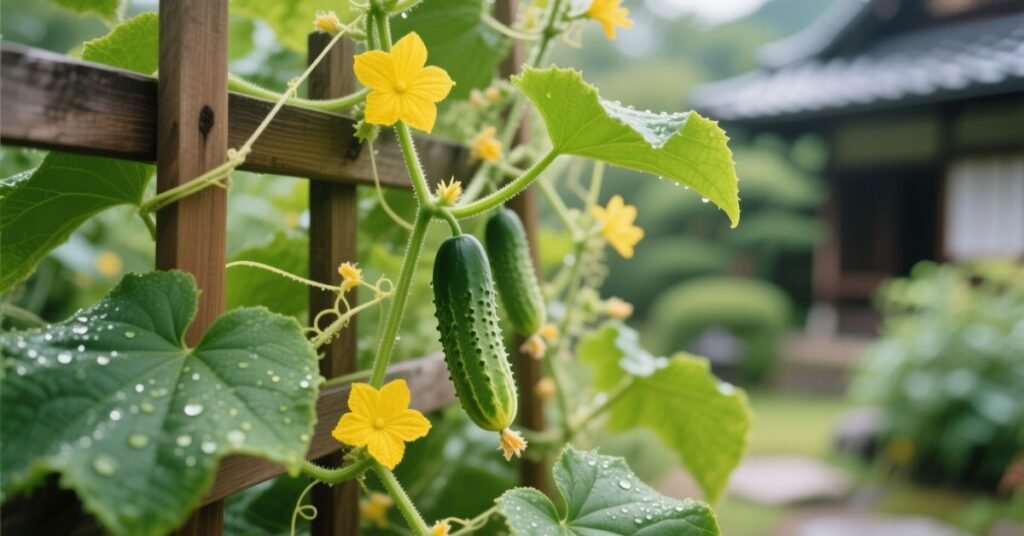
Use a trellis or net to train the vines upward. This saves space and keeps cucumbers clean. Regular pruning and proper training increase yield and prevent disease.
Problems in Japanese Cucumber Plant and Solutions
Japanese cucumber plants may face pests, diseases, and growth issues. Yellowing leaves can signal overwatering or nutrient deficiency. Powdery mildew can appear if airflow is poor. Pests like aphids and beetles can damage leaves and fruits. Solving these problems needs regular checks, proper watering, and organic treatments.
| Problem | Cause | Solution |
| Yellow Leaves | Overwatering or lack of nutrients | Reduce water and add fertilizer |
| Powdery Mildew | Poor airflow or high humidity | Prune leaves and improve ventilation |
| Aphids and Beetles | Pest attack | Spray neem oil or use soapy water |
| Slow Growth | Low sunlight or poor soil | Move to sunny area and enrich soil |
| Fruit Deformities | Irregular watering or pollination | Maintain moisture and hand pollinate |
Care
Japanese cucumber plants need sunlight, regular watering, and well drained soil. Mulching helps keep moisture and reduce weeds. Fertilize with compost or organic feed for healthy growth. Prune yellow leaves, use a trellis for support, and check for pests regularly. Proper care ensures fresh and abundant cucumbers.
Conclusion
Growing Japanese cucumber plants is simple with the right care. They thrive in sunlight, rich soil, and consistent watering. Regular pruning, fertilizing, and pest control keep the plants healthy. With proper attention, you can enjoy fresh, crisp cucumbers straight from your garden
FAQs
1.Do Japanese cucumber plants need to be watered frequently?
Water 2 to 3 times a week, keeping the soil moist but not soggy.
2. When can I harvest Japanese cucumbers?
When they are 8 to 10 inches long, they are at their best in terms of flavor and crunch.
3. What type of soil is best for Japanese cucumber plants?
Well-drained, loamy soil enriched with compost works best.
4. How can I prevent pests on my Japanese cucumber plant?
Check plants regularly, remove damaged leaves, and use neem oil or soapy water.5. Can Japanese cucumber plants grow indoors?
Yes, they can grow indoors with enough light, warmth, and proper care.

